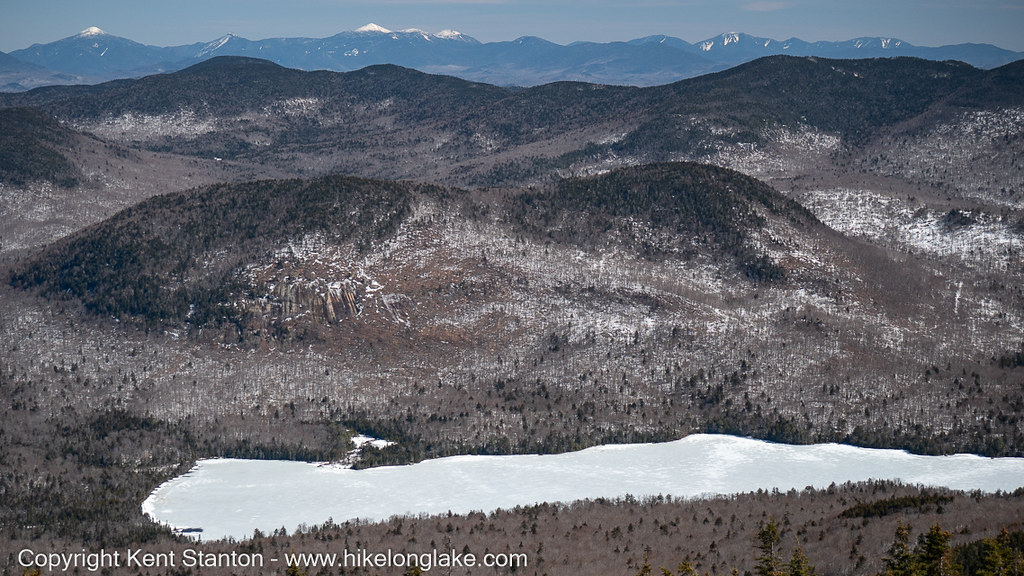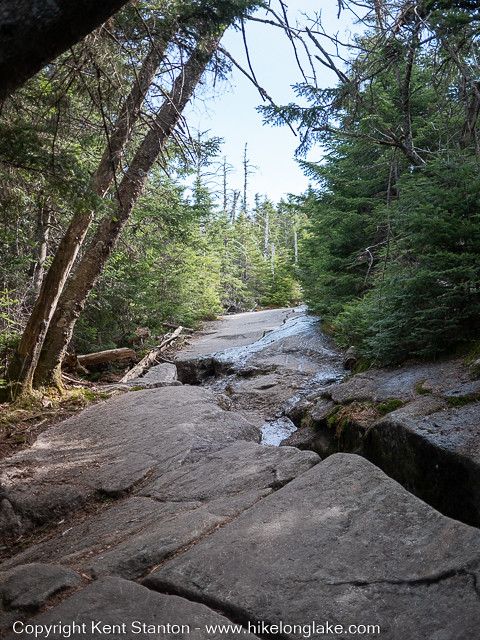
The moderate climb to the firetower on Blue Mountain provides great views of the lake country to the southwest and the High Peaks to the northeast.
| Directions | From Long Lake, proceed south on Rte. 30 towards Blue Mountain Lake. As you approach the village the parking area is at the top of the hill; a quarter mile before you reach the Adirondack Experience (formerly the Adirondack Museum) entrance. There is a very large parking lot. |
| Difficulty | Moderate - The 4.2 mile round trip distance is moderate, but this is a big mountain with a 1600 foot elevation gain. If it's warm, bring plenty of water (a full quart per-person is a bare minimum). Note that this mountain can experience winter-like conditions deep into the spring and early in the fall. |
| Family-Friendly | There are no obstacles that prevent families from climbing Blue Mountain, and many do. It is, however, a strenuous climb, and you should be prepared with jackets, good footware, water and snacks. Be sure to leave plenty of time to descend before dark. |
| Winter | Many hikers climb Blue Mountain in winter but you will need micro-spikes or snowshoes depending on conditions. |
| One Thing to Know | Just 12,000 years ago Blue mountain was a giant pile of rock, with no soil or trees. You can get a sense of this by paying attention to the trail itself. This trail gets heavy use and, in places, trail erosion has cut a channel through the soil down to the bedrock. On the lower sections of the trail this reveals that the soil layer is 18-24 inches thick. Higher up, the soil layer is more like 6-12 inches. Soil accumulates slowly at the higher elevations and it is easily eroded away. |
| DEC Website Page | Blue Mountain Wild Forest |
| Photo Gallery | Blue Mountain Photo Gallery |

Blue Mountain Lake
The summit of Blue Mountain is 3765 feet above sea level, making it the 66th highest mountain in the Adirondacks. From a starting point at nearly 2200 feet the 2.1 mile route ascends 1600 feet. That would be 800 feet of ascent per mile if the ascent was steady. But it's not, the trail climbs at a gentle rate for the first three quarters of a mile. The grade then increases and finally climbs steeply for the last half mile.
Blue Mountain is not a big climb by High Peaks standards, but it's a big mountain for occasional hikers, and more than a few have been fooled by the ease of access. This is a mountain where a little preparation goes a long way and sturdy shoes, plenty of water, and persistence are needed to reach the top. Once you get there, the view is worth it. The view of Blue Mountain Lake is outstanding as is the view towards Tirrel Pond and with the High Peaks in the distance.

Tirrel Pond with the High Peaks in the distance
The elevation also means near the top you'll be in the sub-alpine ecological zone. The harsh conditions above 3000 feet result in a mix of trees that is not found at lower elevations. In the Adirondacks, Balsam Fir, Red and Black Spruce, and White Birch dominate this zone and you'll see plenty of them along this route.

Trail erosion. Hikers have worn away the soil down to the bedrock. The soil at this location was originally 12-18 inches deep. There is even less soil near the top of the mountain.
